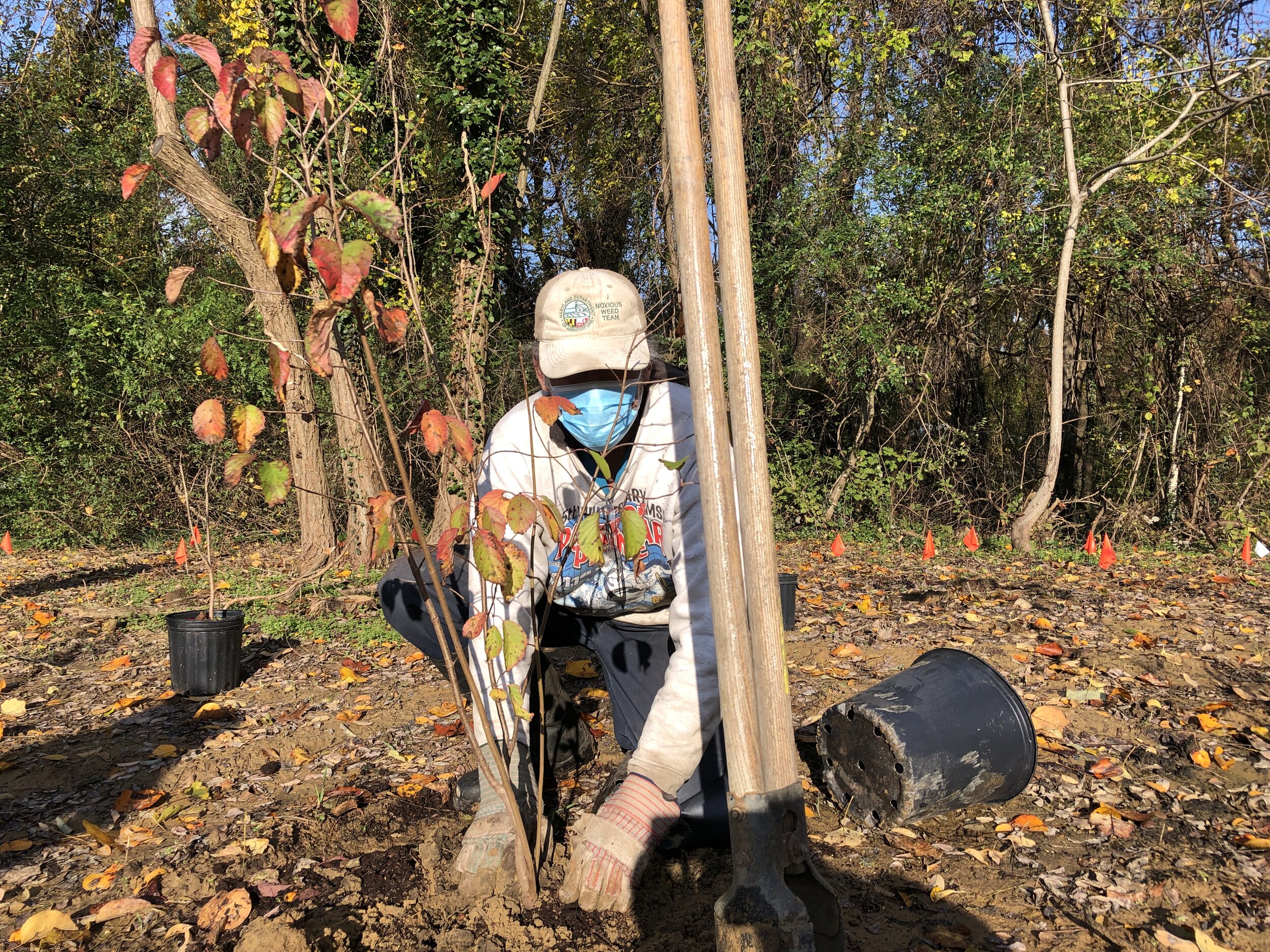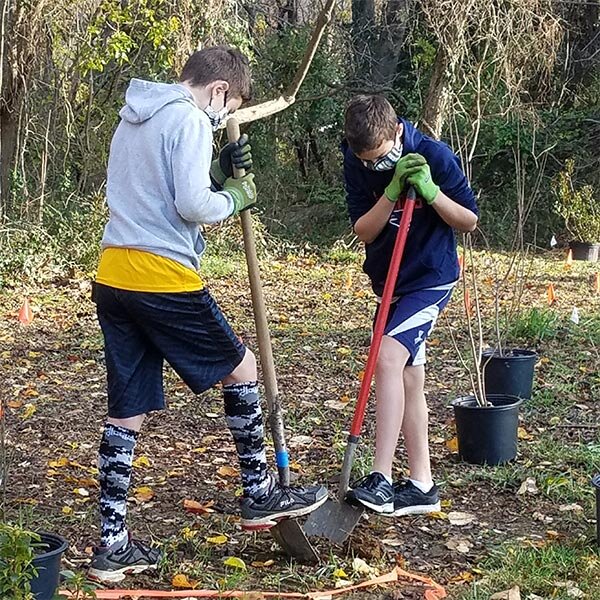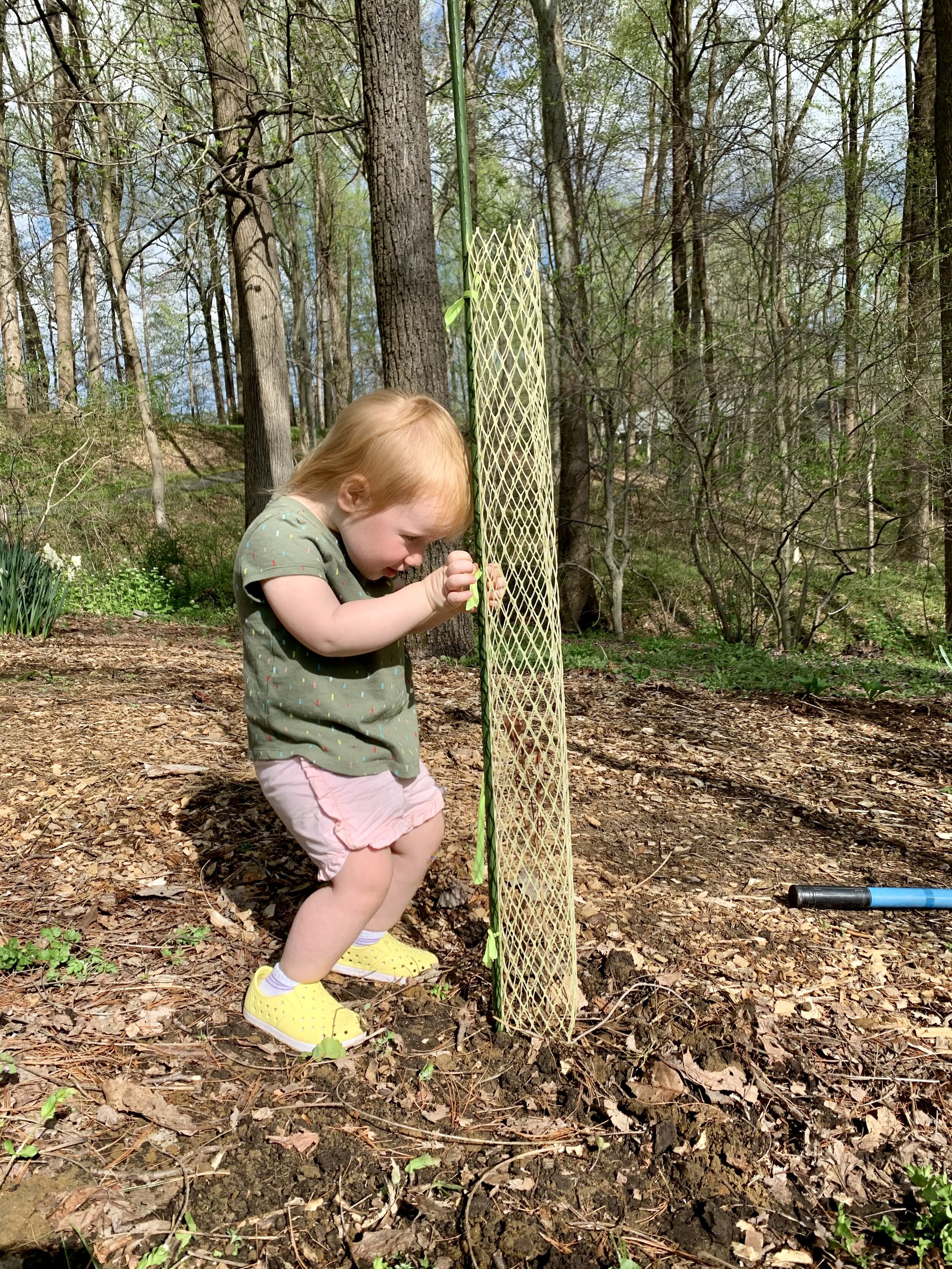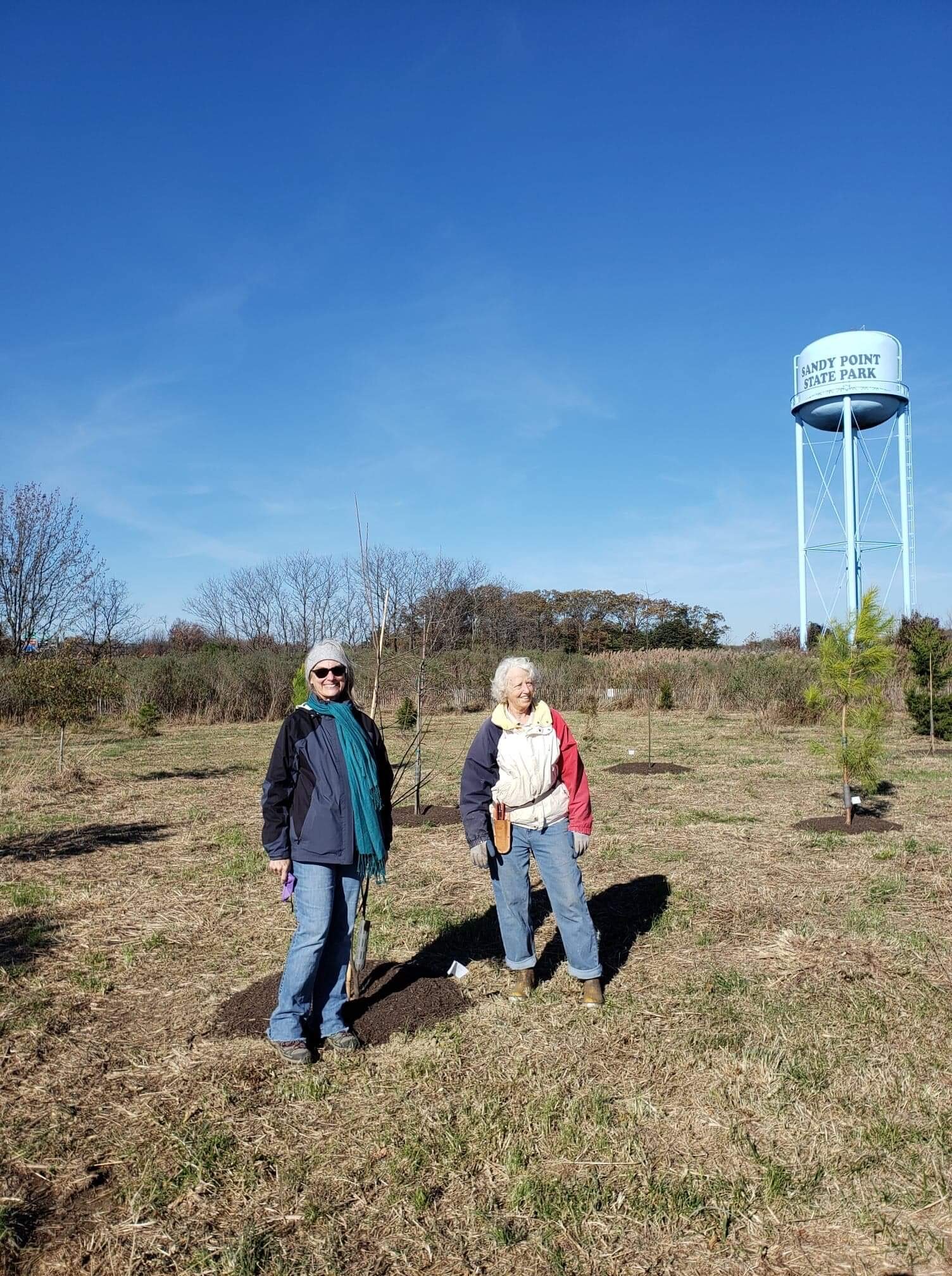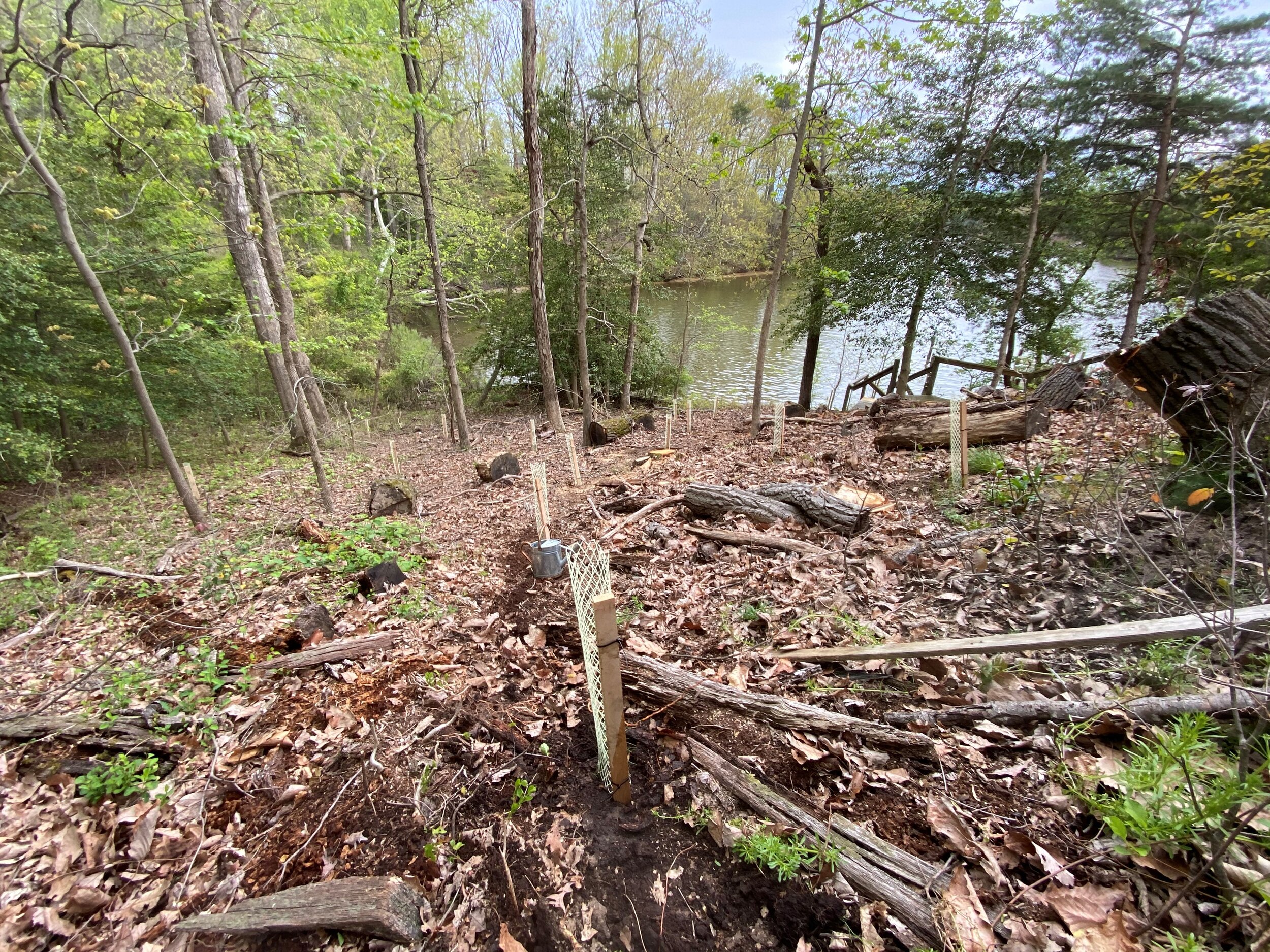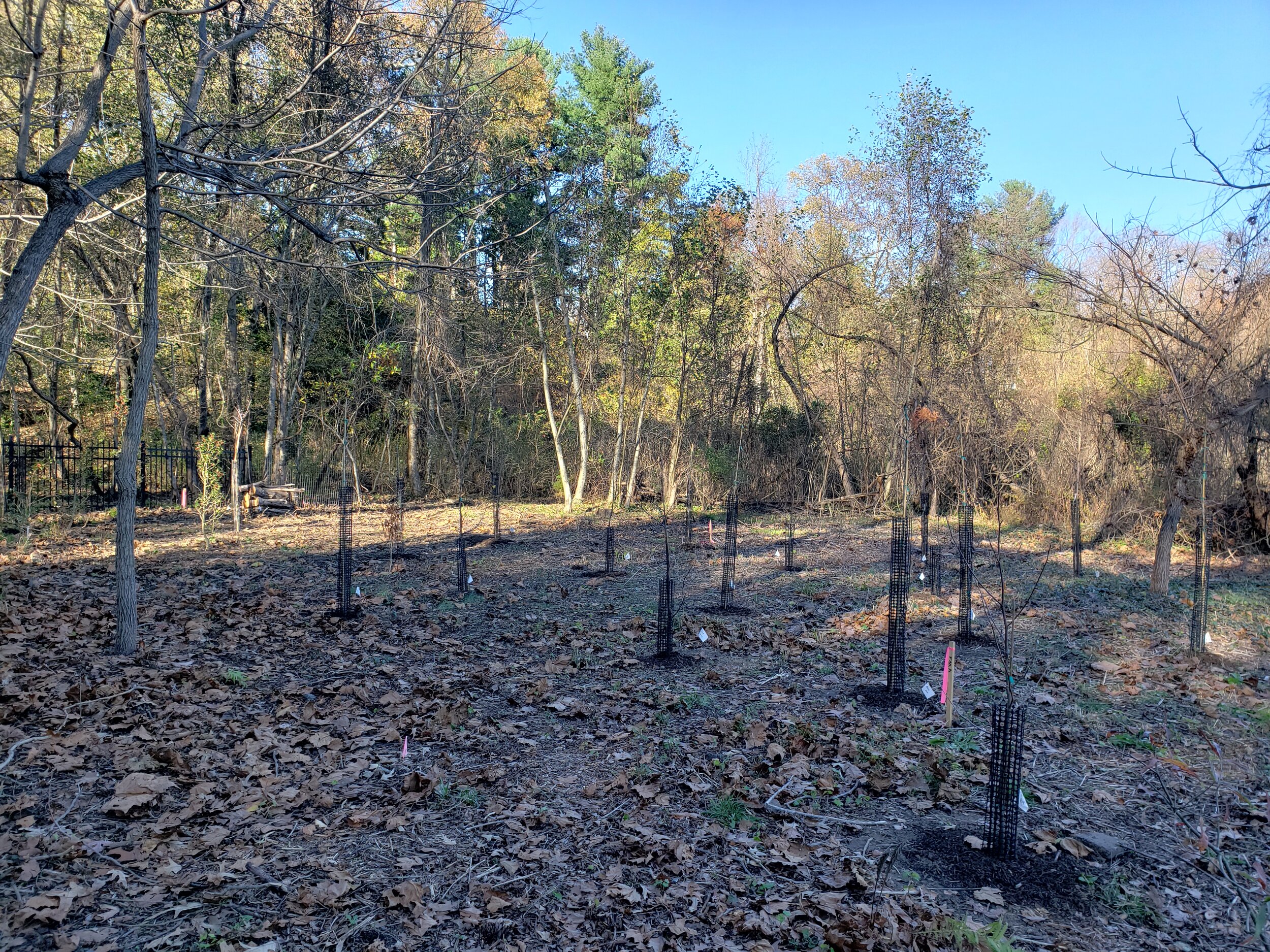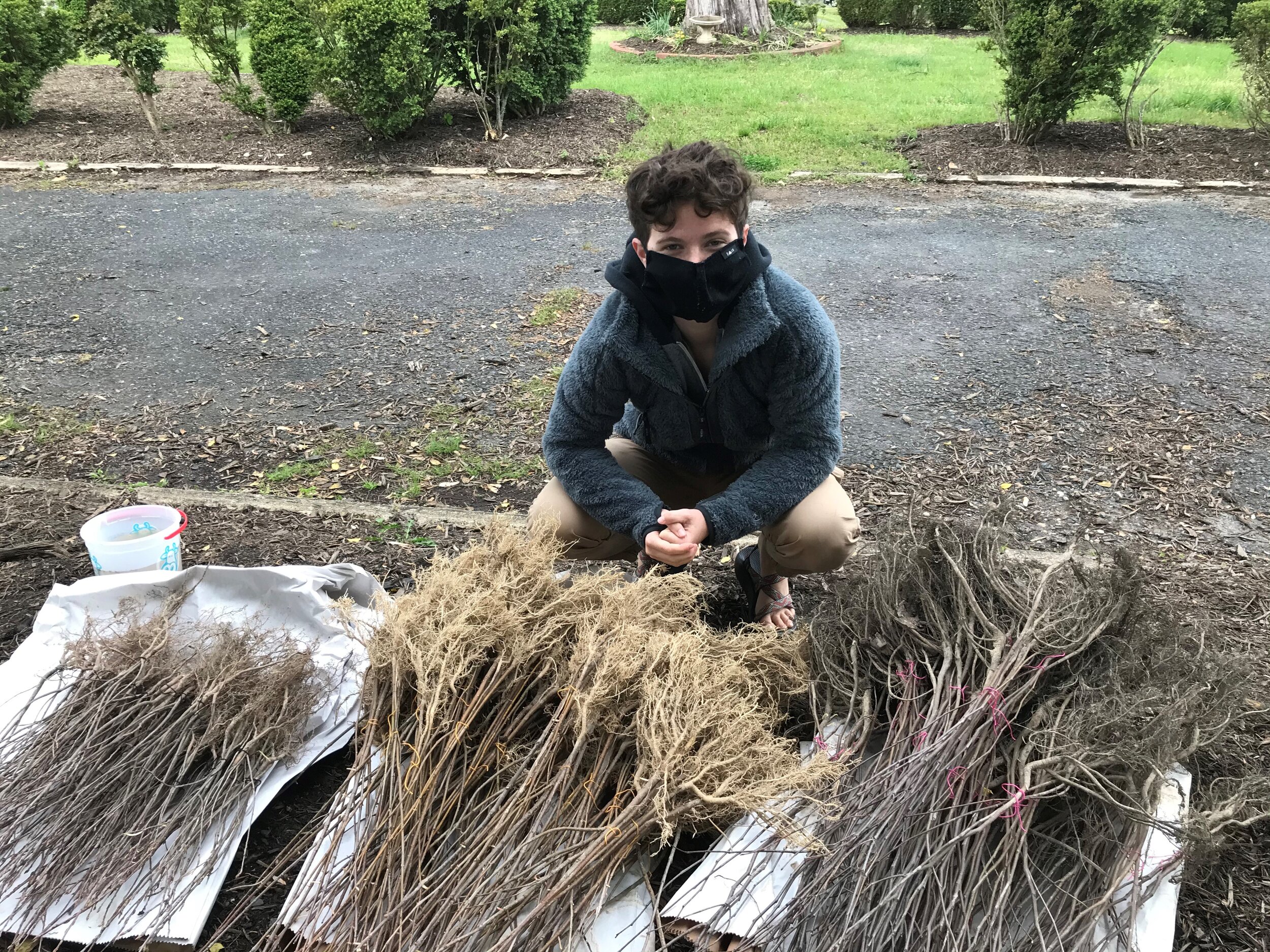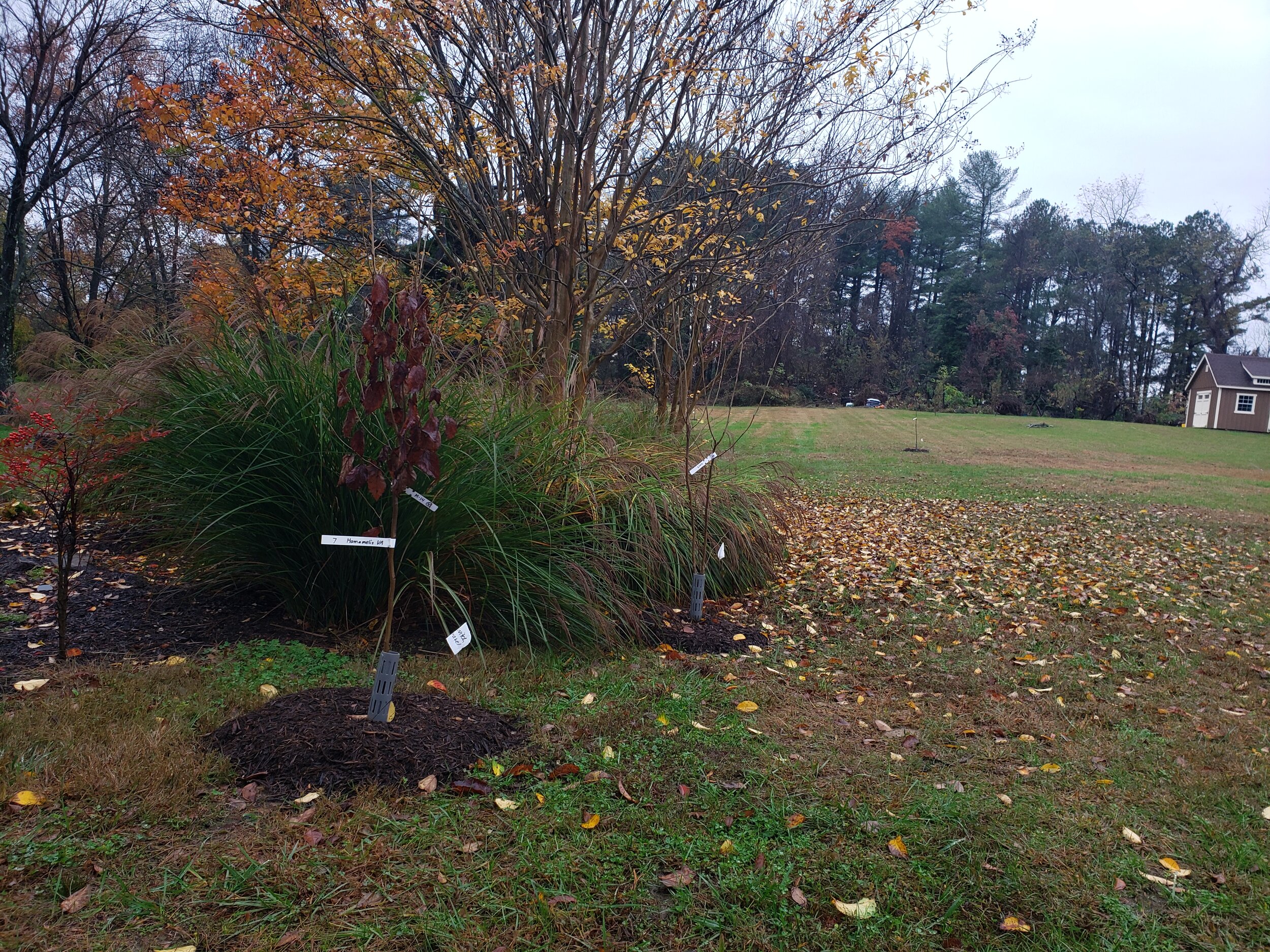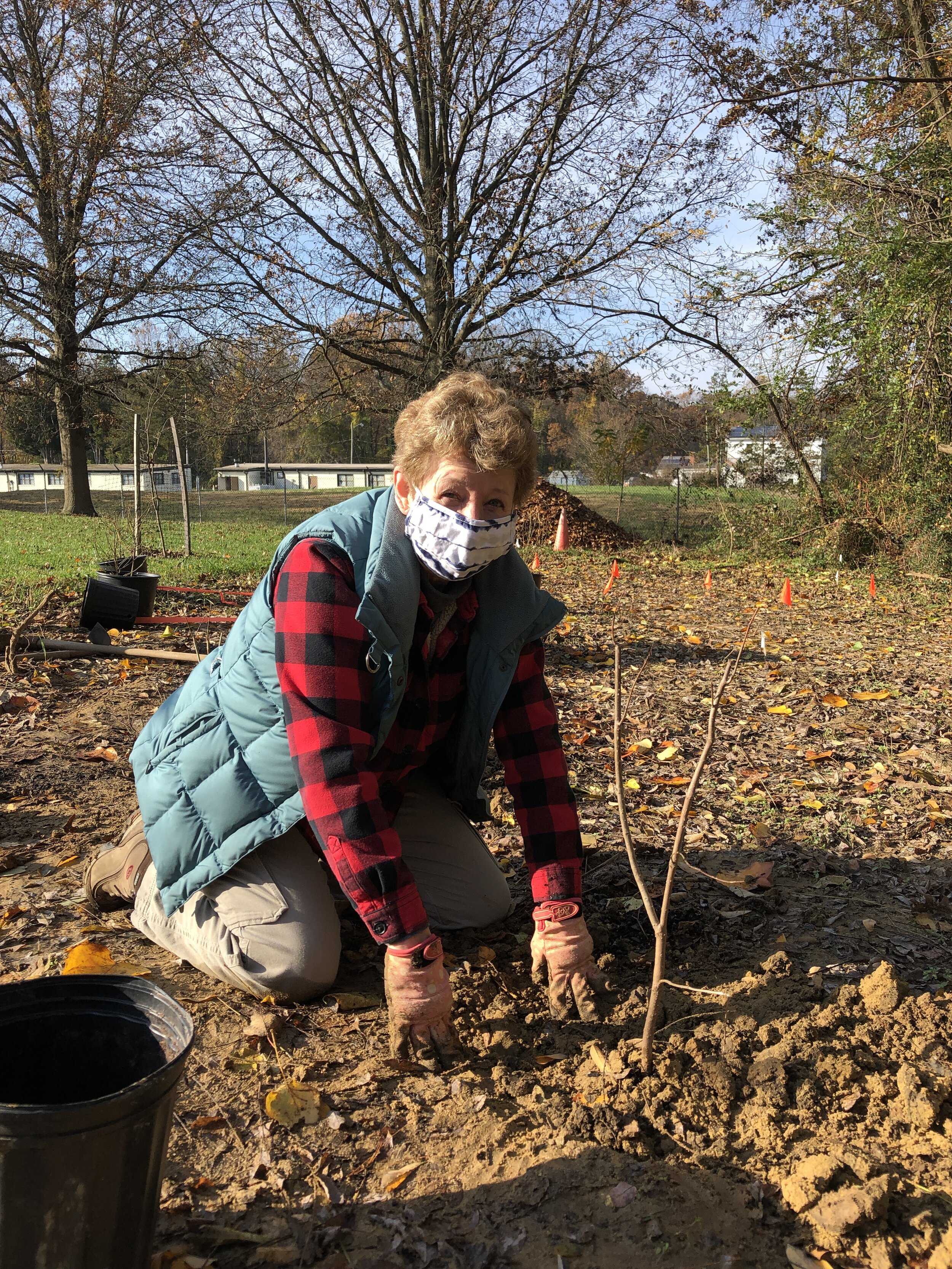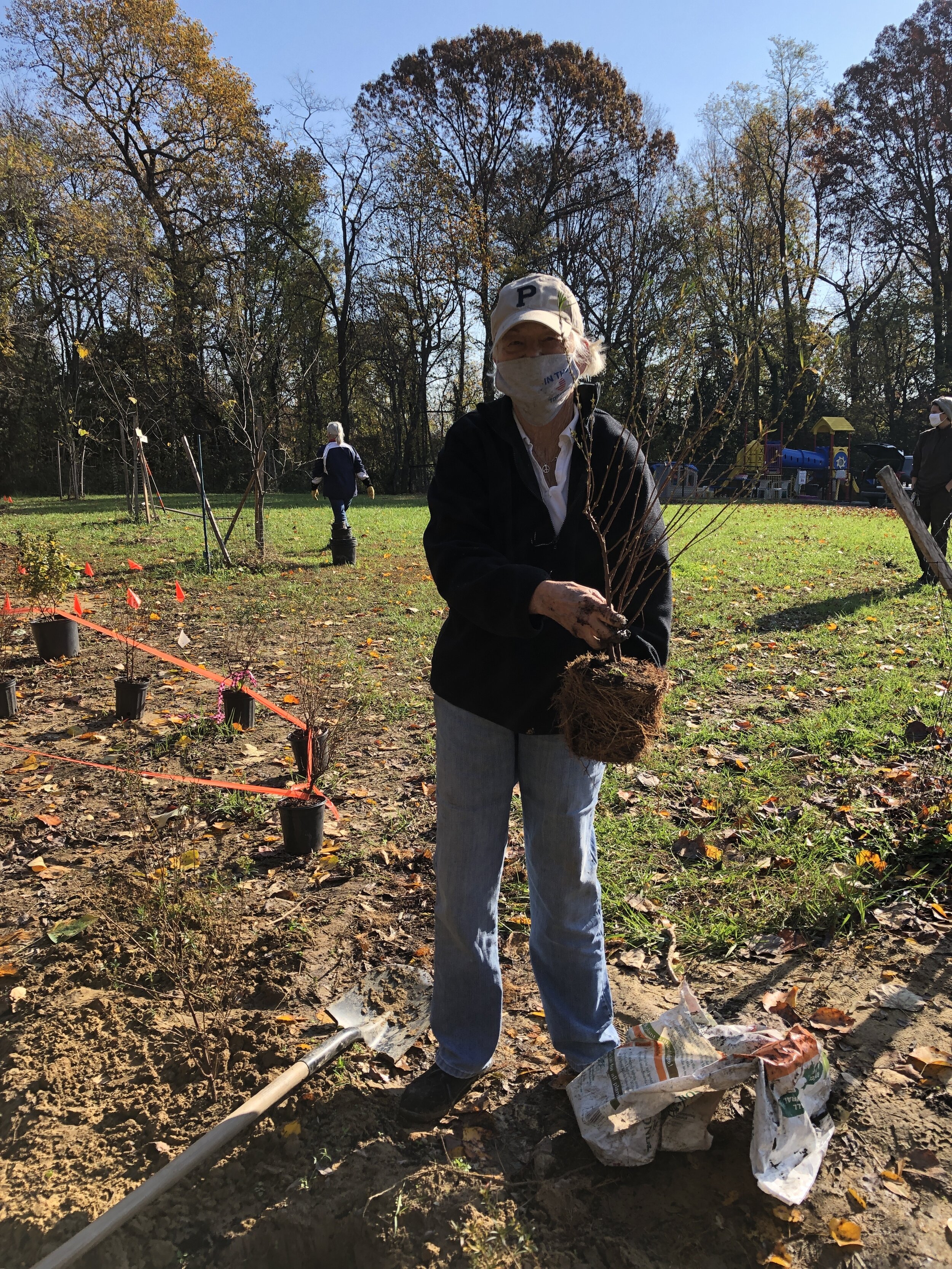June’s Native Maryland Plant
Solidago juncea Aiton
(so-li-DAY-go JUN-kee-uh)
Common Name: Early Goldenrod
It’s the year of Brood X and I don’t need to go outside to hear the deafening sound of cicadas; they’re on many of my plants and I often find them climbing up my pantleg or awkwardly flying past me as I meander through my yard. It’s during these brief encounters that I’m glad that I listened to Haley.
In 2019, I gave the Watershed Stewards Academy a tour of my yard to demonstrate many native plants that are used to address common landscaping problems. As the group came to my pollinator garden, I mentioned that I had recently noticed that the Solidago juncea, planted in the rear of the garden, was slowly encroaching on my shorter plants and may need to be managed or possibly removed and relocated, in favor of the shorter plants. Without hesitation, Haley, a young WSA staff member, said, “But Alison, goldenrod is such a valuable pollinator plant, I don’t think you should get rid of it.” After the tour finished and everyone had gone home, I thought about Haley’s immediate defense of this plant and I decided to keep a closer eye on it. I knew that fall-blooming goldenrod was especially important for late-season bees, but was a summer-blooming goldenrod equally valuable? If so, was it possible for me to constrain it rather than eliminate it entirely?
After two years of observation, I’m convinced that Solidago juncea is a consistent pollinator favorite, attracting a variety of bees and butterflies, as well as some unique beneficial insects, namely scoliid, sand, potter and cicada killer wasps – all solitary and non-aggressive wasps that I enjoy observing. Scoliid wasps are a particular favorite because they feast on June beetle grubs that nest in lawns, sand wasps feed their larvae the invasive brown marmorated stink bug, potter wasps feed their larvae caterpillars, commonly cankerworm and sawfly. And cicada killers, well, what can I say? Although they are more than just a predator of the annual cicadas (they also pollinate plants), I’m delighted to have any insect in my yard that will reduce the cicada population.
Solidago juncea is a solitary or few-stemmed perennial that provides a nice contrast to the many purple and blue flowers blooming in summer. I’ve come to embrace its stature and find its plumes add a nice structural element, even through the winter. The diversity of beneficial insects it attracts makes it valuable to me as it may to anyone interested in integrated pest management (IPM). Thanks Haley, for taking a stand for goldenrod - an often under-appreciated plant in any garden.
~ Alison Milligan – Mstr. Gardener/Mstr. Naturalist/Mstr. Watershed Steward
Chesapeake Bay Landscape Professional (CBLP)







